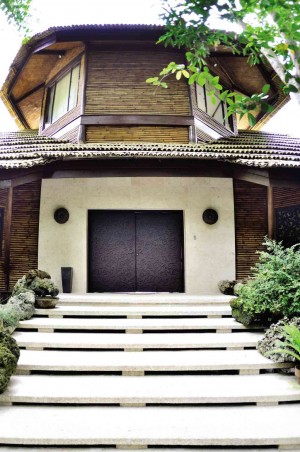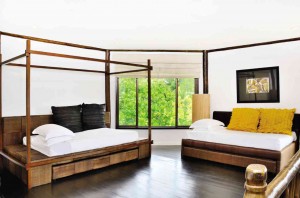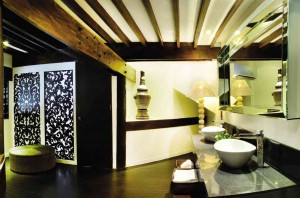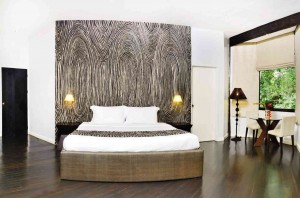

Two decades ago, Pearl Farm Resort in Davao made it to Architectural Digest which noted its modern Filipino aesthetics.
Architect Francisco Mañosa had built a cluster of modern villas above the sea, much like the house on stilts of the Badjaos and the Samals. The villas were assigned to the children of Don Antonio Floirendo, founder of the agricultural company Tagum Agricultural Development Co. (Tadeco) and the resort. The villas reflected the personalities of their inhabitants.
Maria Cristina “Maricris” Floirendo-Brias, creative director of Tadeco Livelihood and Training Center, has since been working with the tribes in her father’s plantation to create world-class home products using t’nalak and other organic materials.
“I started with cushions with T’boli patterns, frog patterns, coco beads and t’nalak,” said Brias.
Tadeco as a brand has become synonymous with t’nalak, the woven abaca fiber that is infused with natural dyes, made by the T’boli tribes.
Eventually, Brias’ pillows would be found in the country’s most stylish homes and in trade fairs here and abroad.
During the holidays, she would invite colleagues from the design world, such as Tes Pasola and Tony Gonzales, to Pearl Farm. In Brias’ personal Villa 6, she would ask Pasola’s and Gonzales’ advice on how to spruce it up.

When Brias’ uncle moved out of Villa 5, it was placed under Brias’ care.
“Villa 5 is usually rented out to other guests. It needed to have personality,” recalled Pasola.
During the refurbishment, the designers were given instructions—foremost was to leave the shell and the exterior lamps as they were, since Mañosa’s design had become a signature of the resort.
However, the wooden stairs were deteriorating due to overexposure to the elements and had become unsafe to tread on. Pasola and Gonzales suggested to replace it with textured concrete.
Strong affinity

Although the Floirendos were not born in Mindanao, they’ve had a strong affinity with the region. This is evident in the interiors of their home which would include some Muslim artifacts or fabrics as decorative elements.
“Playtime lang. Tony (Gonzales) said, ‘Let’s do okir,’” recalled Pasola. Okir motifs are plant forms in Mindanao art. As a graphic designer, Gonzales stylized the patterns which were cut out from wood.
“When you see it up on the walls, the okir looks grand,” said Pasola.
The rest of the décor was the work of Pasola and Brias. Texture plays a vital role in sparking flair without having to depend too much on furniture.
“The inspiration was easy. From Maricris’ t’nalak pillows, we scaled it up,” said Pasola.
The woven patterns found in the pillows became wall panels. These t’nalak panels added depth and drama in the monochromatic interiors. T’nalak is also used in the frames, bathroom counters, ottomans, benches and throw pillows.

“We didn’t want to put too much furniture because the first thing you want to do is to slouch,” said Pasola.
The place is also furnished with Milo Naval’s seaters and four-poster beds. “He’s one of the better designers for oversized furniture,” said Pasola. “The rest of the decor is throw pillows.”
The windows are dressed in Roman shades made of banana fibers. “They come from the farm in Tadeco in Tagum,” said Brias. “It’s difficult to weave them. When you strip the stalk, 75 percent is water while only a quarter of it is fiber. You have to strip so much to get a substantial amount for the abaca. Having a banana plantation makes it feasible. For weaving, you need the long fibers.”
“For the locals, banana fiber may seem ordinary, but for us it’s like, ‘Wow! It came from the earth,’” exclaimed Pasola.
For her part, Pasola created an artwork—a paper collage with a wave pattern which is displayed at Villa 5. She also designed bamboo racks with nodes for guests to hang their robes and towels. “It’s sustainable. If it breaks, you can replace it,” she said.









































